(Photo courtesy of Avionne Longware)
The history of police in America is a story of repeated promises to change from its gatekeepers, yet people of color, adolescents and other vulnerable populations say they continuously bear the brunt of its shortcomings.
Youth in America are criminalized every day, with racial and socioeconomic disparities further increasing their likelihood of being policed, arrested or killed by law enforcement.
Despite overall declines in arrests and incarceration, children of color are overrepresented in the juvenile justice system every step of the way. In 2018, Black youth were arrested more than twice as often as white youth.
“Hispanic/Latino youth are placed in residential facilities at a rate that is 1.3 times greater than their representation in the population,” according to a 2017 report by the U.S. Department of Justice’s National Criminal Justice Reference Service.
Nearly 730,000 minors were arrested in the United States in 2018, according to federal data from the Office of Juvenile Justice and Delinquency Prevention. For thousands across the country, this path is set off by a singular interaction that defines the trajectory of a child’s life: an encounter with police.
As a child, Avionne Longware considered the police officers patrolling his Los Angeles neighborhood as “the ones that help the community.”
But that assessment was short-lived, he said. Now 21, Longware finds himself reliving the trauma caused by his multiple interactions with law enforcement each time he hears a new story of Black men and women suffering at the hands of police.
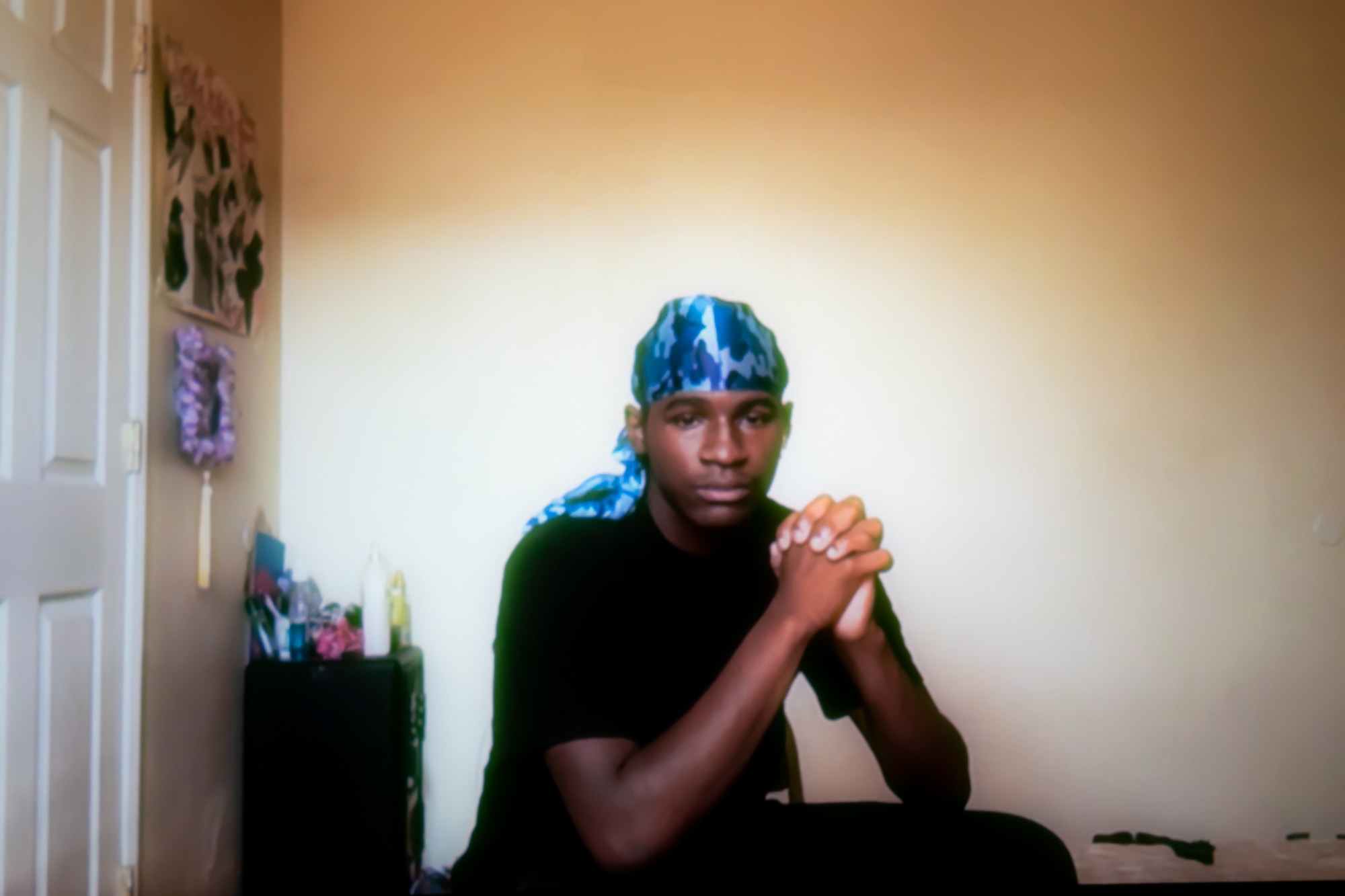
Now 21, Avionne Longware says the memory of a police search by two Los Angeles police officers when he was in sixth grade still makes him uncomfortable. After his backpack was forcibly searched, Longware remembers one officer saying, "He's lucky we didn't find anything." (Portrait taken remotely by Gabriela Szymanowska / News21)
Longware said he has never been arrested, but starting at age 12, he has had officers kneel on the back of his neck, slam him to the ground and point guns in his face.
“They tell me I should fear the people in my neighborhood. No, I fear the people that patrol my neighborhood,” Longware said. “I never feared my people, even though I have gangs in my city.”
As millions across the U.S. protest, petition and push for police reform after George Floyd died in Minneapolis in late May, the operations of thousands of law enforcement departments are under a microscope.
“Police have been trying to reform since the very beginning,” said Tyler Wall, an assistant professor at the University of Tennessee, Knoxville, whose work has focused on police violence. “There’s always been controversies and crises of policing.”
In New York, Chicago, Baltimore and other major cities, young people have felt targeted, stereotyped and policed unfairly for normal childhood behavior, according to federal investigations and police watchdog organizations.
This criminalization isn’t limited to big cities: The states with the highest youth arrest rates in 2018 were Wyoming and South Dakota, which are largely rural.
Yet, most law enforcement departments in the U.S. offer little to no standards when it comes to youth-specific policies or practices, said Lisa Thurau, founder and executive director of Strategies for Youth, a policy and training organization that works to improve police-youth interactions.
“The default assumption is that officers should treat kids like adults, and that’s highly problematic,” Thurau said.

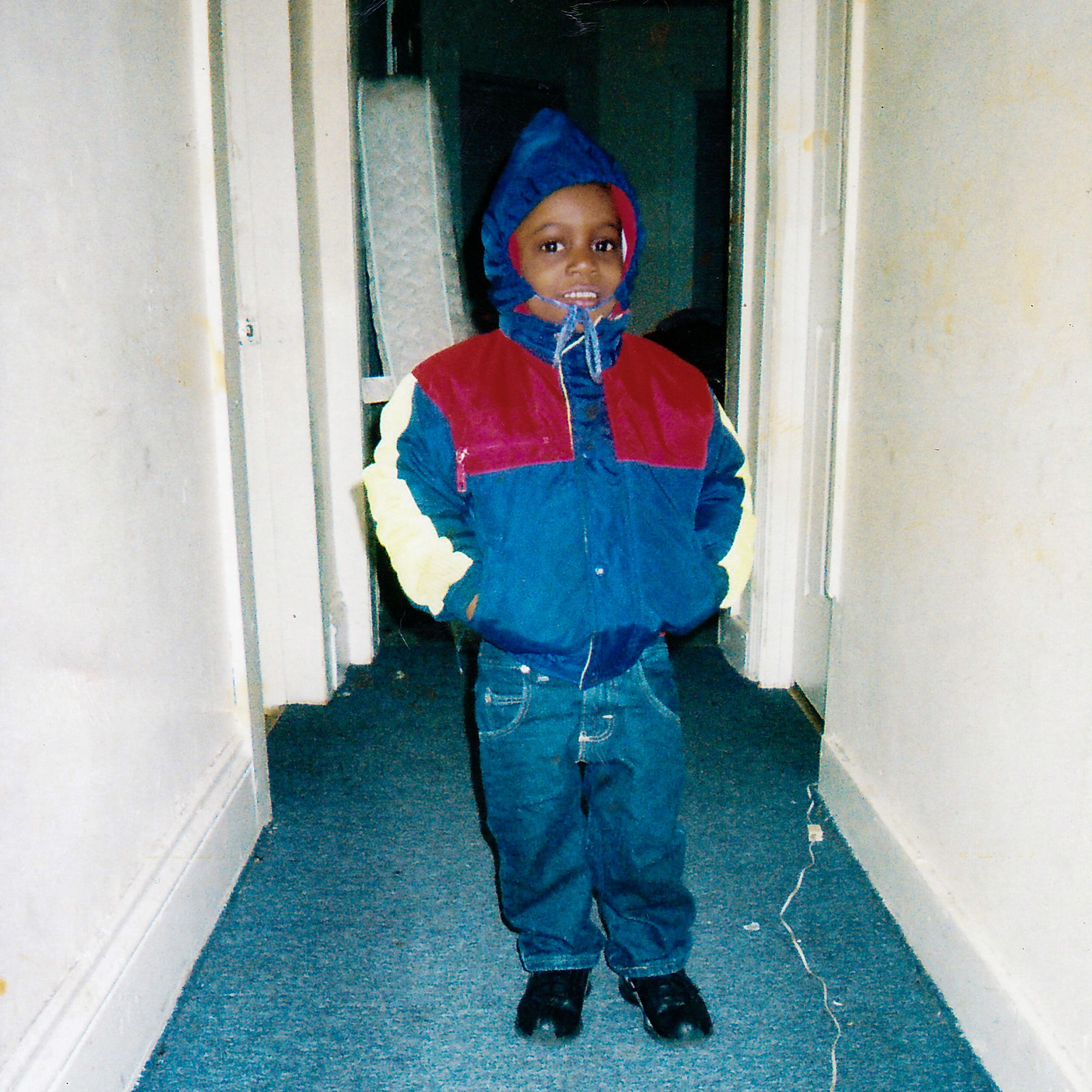
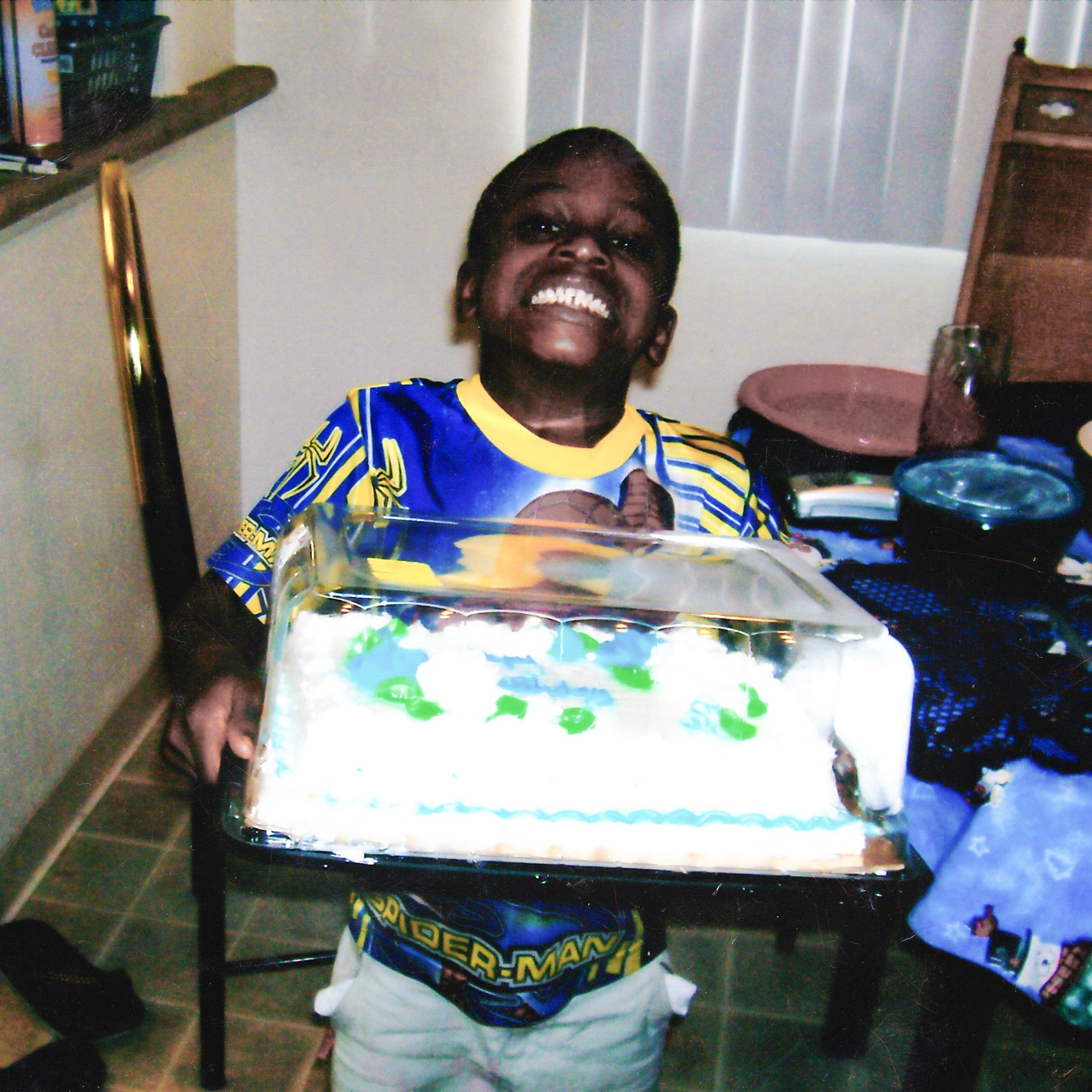
Melvin Gaye, a Liberian immigrant whose family moved frequently, was in third grade the first time he was placed in handcuffs. "I was 7 … that's when things started to go wrong,” he says. Gaye recently turned 19 – the first birthday he celebrated outside a detention center since he was 14 – at home in Iowa. (Photos courtesy of Melvin Gaye)
Melvin Gaye was 2 when he immigrated to the U.S. from Liberia with his mother. He experienced continuous change as they moved around the country, making stops in Illinois, Alabama and Arizona, to name a few.
But for Gaye, one thing was always constant: the police.
His very first encounters with law enforcement – both of which resulted in him in handcuffs – happened when he was still in elementary school and living in Cleveland. His crimes: jaywalking while he was on his way to see a movie and walking in his neighborhood after curfew.
During his middle school years in Rhode Island, Gaye said police sometimes would stop-and-frisk him on the way to school.
“I’ll be walking down the street,” he recalled, “the ‘jump out boys’ would come and just, like, be searching me like, ‘What you got on you?’ And I’m like, ‘I ain’t got nothing, bro, I’m going to school.’ I just felt like it was like I was in a jungle, in a zoo.”
Now 19, Gaye is back home in Iowa after his release from a juvenile detention facility in January.
“I thought Des Moines, Iowa, was gonna be better,” he said. “But, you know, if you don’t change something, you’re going to still fall into the same thing you’ve been doing.”
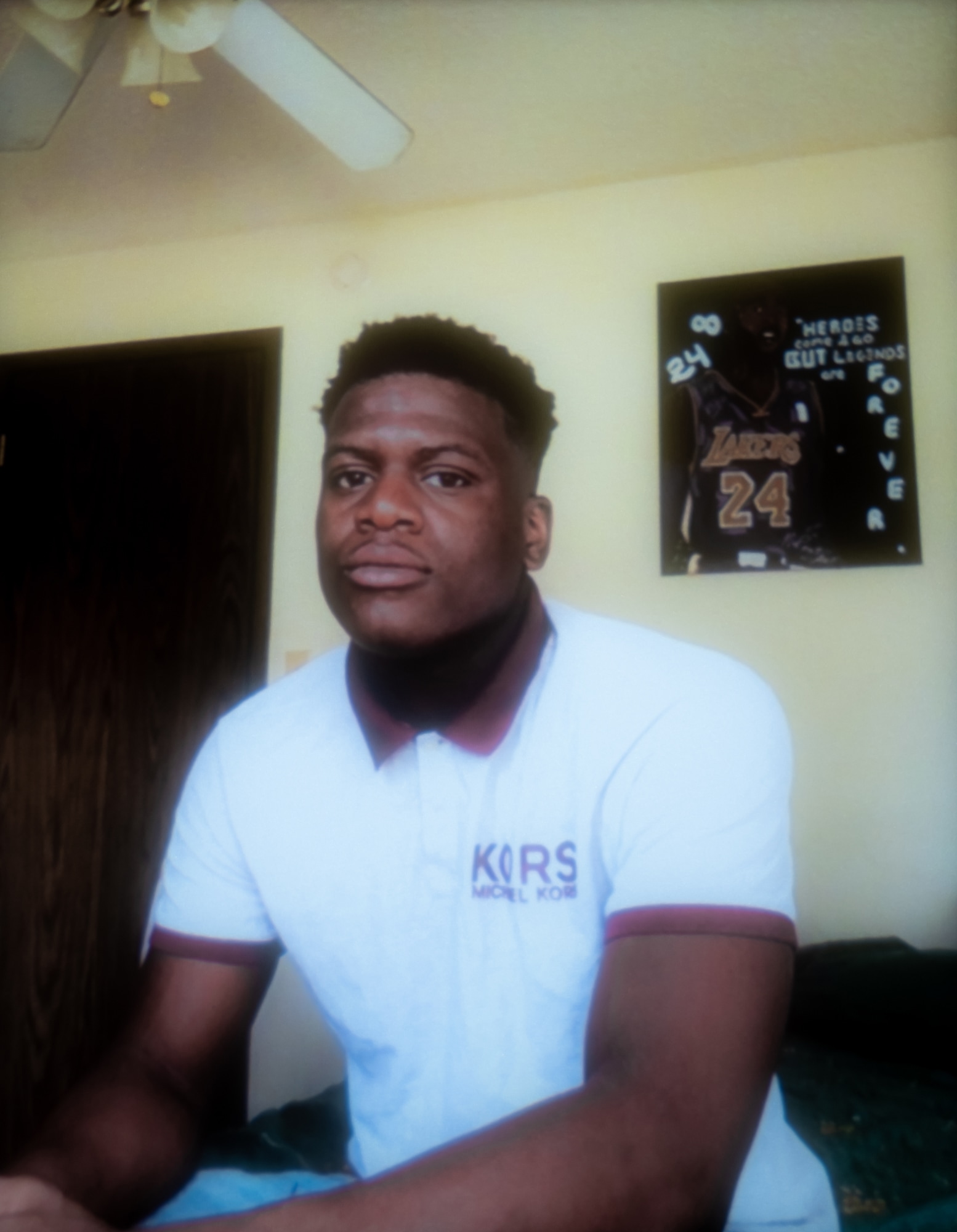
“Imagine your life being controlled and structured for years; no holidays, no time with your family. That’s what really woke me up to do better,” says Melvin Gaye, who was incarcerated for nearly four years and now lives in Iowa. (Portrait taken remotely by Chloe Jones and Calah Schlabach / News21)
Nationwide standardization of policing practices is nearly nonexistent among the roughly 18,000 law enforcement agencies across the U.S. Policies and accountability measures can vary greatly from agency to agency.
“You have federal, you have state, you have city, you have local sheriff’s offices, tribal, campus… it’s a very disjointed system,” said Paul Ashton, the director of organizational impact for Justice Policy Institute, a national nonprofit focused on justice reform.
The lack of a centralized system contributes not only to the challenges of ensuring fair treatment of young people, but to policing as a whole, he said.
“Everyone has their own policies and their own procedures and own approaches to dealing with youth,” Ashton said, adding that aside from some basic standards, “In the end, no two agencies are identical.”
Poor policing bears long and short-term consequences, ranging from a continued abuse of power by officers to physical and emotional trauma for those who they’re meant to serve. In the worst cases, the repercussions are deadly.
Isiah Murrietta-Golding was 16 when police in Fresno, California, fatally shot him in the back of the head in April 2017.
Officers had pulled him over as he and his friends were driving on a Saturday afternoon to question Murrietta-Golding about a murder in which his brother was a suspect.
Murrietta-Golding ran, eventually hopping a fence around a day care that was closed during the weekend.
In pursuit, Sgt. Ray Villalvazo fired one shot, then handcuffed Murrietta-Golding’s limp body. Fresno police justified Villalvazo’s actions, stating he “feared he was about to be shot,” and claiming officers saw Murrietta-Golding reaching into his waistband multiple times while running.
Murrietta-Golding was unarmed. He died three days later.
Surveillance footage of the incident – released two years after Murrietta-Golding’s death – circulated nationally and provoked outrage in Fresno and online.
Michael Haddad, the attorney representing Murrietta-Golding’s family in a lawsuit against the city, believes Villalvazo shot Murrietta-Golding to stop him.
Villalvazo, Haddad said, “assumed he’s in a gang. You know, he’s a Latino boy.”
He said police officers “have kind of a lack of respect for human life when you’re dealing with someone in Fresno who they think is a gang member or they assume, and they do it all the time in Fresno.”
Fresno Police Department regulations on firearm use have recently been changed to require an “immediate threat,” which could have protected Murrietta-Golding. Although Villalvazo was trained on this new policy, Haddad said, it didn’t change his conduct.

The Fresno Police Department changed its policy on the use of firearms as part of a settlement in an excessive force lawsuit filed in 2016 by the family of Isiah Murrietta-Golding, 16. He was fatally shot as he ran from police who tried to question him about a brother suspected of murder. (Photo courtesy of Fresno Police Department)
In recent years, teenagers and young adults have been involved in some of the most notable incidents of police brutality. Michael Brown was 18 when he was shot and killed by Ferguson, Missouri, police. Elijah McClain of Aurora, Colorado, was 23. Tamir Rice of Cleveland was 12.
“The officers involved need to face consequences. They need to be prosecuted,” Haddad said. “And even when we have these lawsuits and their departments pay millions of dollars, the officers don’t face consequences. … There needs to be more of a respect or, as they’re trained, a reverence for human life, which they are just not indoctrinated with.”
Since retiring as a captain with the Gainesville Police Department in northern Florida, William Halvosa has worked to address racial disparities in the department’s youth policing, implementing such changes as banning arrests of juveniles for their first misdemeanors, and adding youth-specific training for officers.
“Systemically, there’s a lot of things that are in place that’ve been in place for a lot of years. And I don’t think some of these institutions are ready to change the rules,” Halvosa said. “It’s a challenge to get things changed, even locally – you’d be surprised – but policing is a good place to start because we are the gatekeepers of the juvenile justice system.”
Since instituting these changes in 2014, the city has seen 67% less juvenile arrests. However, its racial disparities worsened: Black youth in Gainesville were arrested 13 times more often than white youth in 2018, according to city data.
Reforms in one department can only do so much to lower youth arrest rates.
Alachua County, of which Gainesville is the largest city, has a juvenile arrest rate almost twice the national average, according to the Florida Department of Juvenile Justice. Four police departments operate in the county.
Alachua County, Florida is home to 269,000 residents, and four police jurisdictions.
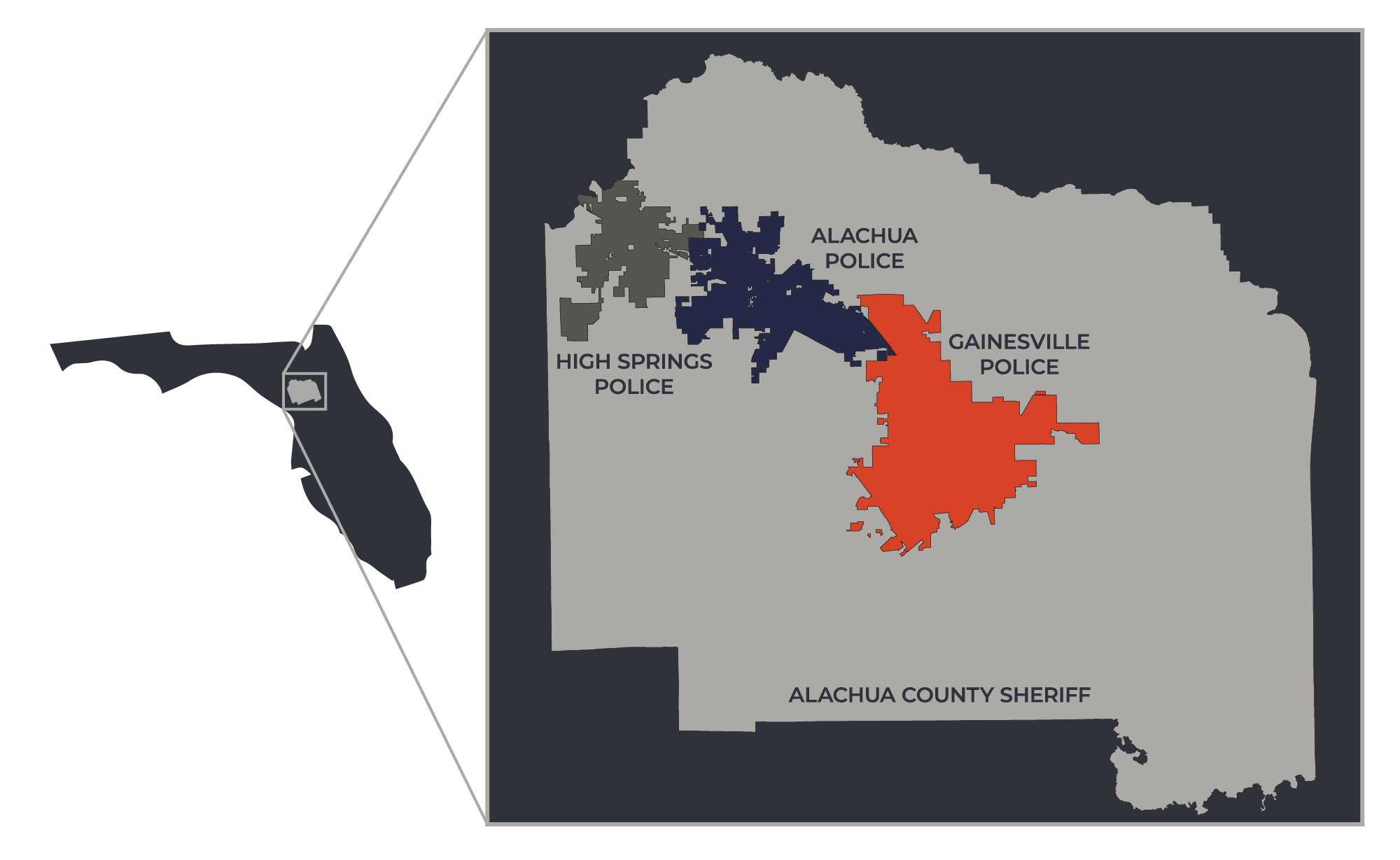
Around the country, many departments have attempted reforms and community dialogues focused on developing a mutual understanding with kids, especially those from heavily policed communities.
But the lasting effectiveness of these exercises is debatable, said sociologist Tyler Wall, adding that questions over police legitimacy are consistently followed by attempts of reform. And whether it’s more education, training or technology, Wall said, these promises at their core have historically been the same.
“They might take, you know, the form of the specific era that we’re talking about, but in general, this is reform.” he said. “And then what happens, of course, is nothing — nothing really substantial comes of that.”
For Destiny Harris, 19, an activist from the West Side of Chicago, stopping violence in communities, especially those that are heavily policed, means addressing the “why” behind it, which includes inadequate access to everyday necessities and underfunded schools.
Harris has been a central figure of No Cop Academy, an effort to stop the construction of a new police academy in Chicago and instead divert the $95 million allocation toward youth services.
When surveyed, 95% of the nearly entirely Black residents of West Garfield Park, the neighborhood selected as the site of the academy, recommended investing in something other than the Police Department.
“It’s like all these things that need funding are being pushed down to the bottom,” Harris said. “Police are what are being prioritized, right? Black and brown youth are being put at the very bottom and treated like second-class citizens.”
As advocates and local governments across the U.S. rethink the presence of police in children’s lives, redirecting efforts and funding toward crisis response teams and community-oriented prevention have emerged as alternate models of public safety.
In New Jersey, the Newark Community Street Team serves roughly 1,200 kids every day as a community-centric public safety organization that focuses on reducing crime through trauma-informed practices, such as youth mentorship, conflict resolution and facilitating access to other social services.
The organization was founded in 2015, just one year after a three-year federal investigation into Newark police found that a history of unconstitutional conduct in the department had “eroded public confidence in the police.”

The Newark Community Street Team was created in 2015 after a three-year federal investigation found that Newark’s police had a history of unconstitutional conduct that “eroded public confidence in the police.” (Photo courtesy of Aqeela Sherrills)
In its formal complaint, the Department of Justice stated that Newark officers stopped thousands of people who displayed no signs of criminal activity for “being present in a high crime area,” adding that the individuals were described as “wandering” or “loitering.” Additionally, Newark’s Black residents were twice as likely to be stopped compared with other residents.
“We want our police to be coaches and therapists and teachers and, you know, everything,” said Aqeela Sherrills, the team’s director. “We’ve got to get rid of all of this unnecessary investment in police infrastructure when we can invest directly into social services and infrastructure that actually has proven to make people feel safe.”
As an alternative to policing, the team employs members of the community to mediate disagreements before they become violent. If given a fraction of the tens of millions of dollars that U.S. police departments pay out in misconduct charges alone, organizations like his could produce dramatic results, Sherrills said.
“We don’t get that type of money to fail,” Sherrills said. “If we lose, you know, a thousand dollars, two thousand dollars, man, they’re talking about shutting down our programs and organizations.”
For youth in crisis because of conflict, home instability, substance abuse or poor mental health, certain calls to law enforcement across the nation are redirected to a crisis-intervention group of trauma-trained mental health professionals.
“And it’s really not our job to be parents in the community,” said Halvosa, the former Gainesville police captain. “It’s not our job to be arresting kids in school, and it’s not our job to be arresting kids at home that aren’t listening to their parents.”
Research has shown that young people are more likely to participate in dangerous behavior or act impulsively and aggressively because human brain development isn’t complete until about age 25.
Because of this, some experts say young people shouldn’t be subjected to adult policing or locked up for status offenses, which include such infractions as skipping school, underage drinking or violating curfew.

“I think my face changed accordingly with the stuff that happened to me,” says Avionne Longware, who had his first encounter with police at age 12. “I don’t smile like I used to when I was a kid. Kinda sad, honestly.” (Photo courtesy of Avionne Longware)
Longware, the Los Angeles native who once looked up to police, said his childlike view of the world was shattered by his first personal encounter with police when he was 12.
Longware was walking to class 30 minutes late when he was approached by two Los Angeles Police Department officers. He was asked to hand over his backpack, and when he questioned their reasons, the officers accused him of skipping class. One grabbed Longware, the other grabbed his bag, which contained nothing but books.
He went home that day with a truancy ticket and wake-up call.
“They didn’t care that I’m saying, ‘I’m going to school,’” he recalled. “They didn’t care that I never missed a day that year. I was always going to school, and they didn’t care about that. None of that mattered.”
The policing of status offenses varies between jurisdictions and demographic groups, said Melissa Goemann, senior policy counsel for the National Juvenile Justice Network.
Goemann said the organization pushes “common sense” reforms that offer alternatives to law enforcement “so that we’re not calling the police for health issues and things that they’re not equipped to deal with.”
“Training is necessary, and officers are definitely not adequately trained to work with youth,” said Lisa Thurau, police-youth policy expert and executive director of Strategies for Youth, which is based in Cambridge, Massachusetts.
Kelsey Collesi, Kimberly Rapanut and Morgan Wallace are Buffett Foundation fellows.
Our content is Creative Commons licensed. If you want to republish this story, download a zip file of the text and images.